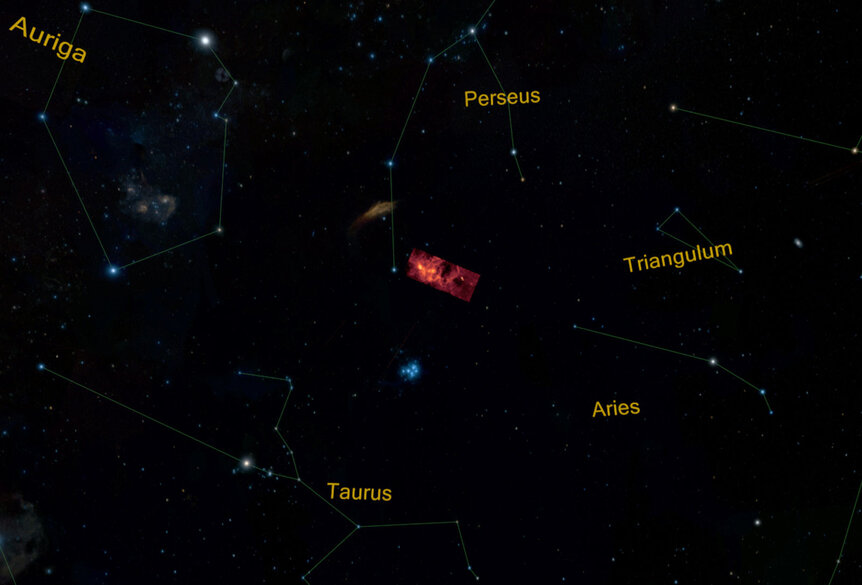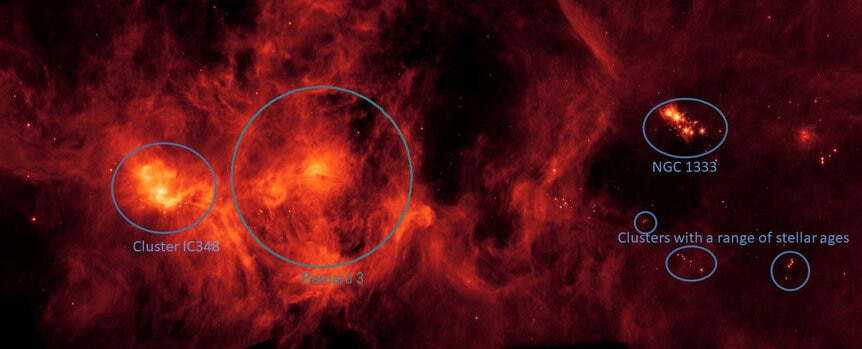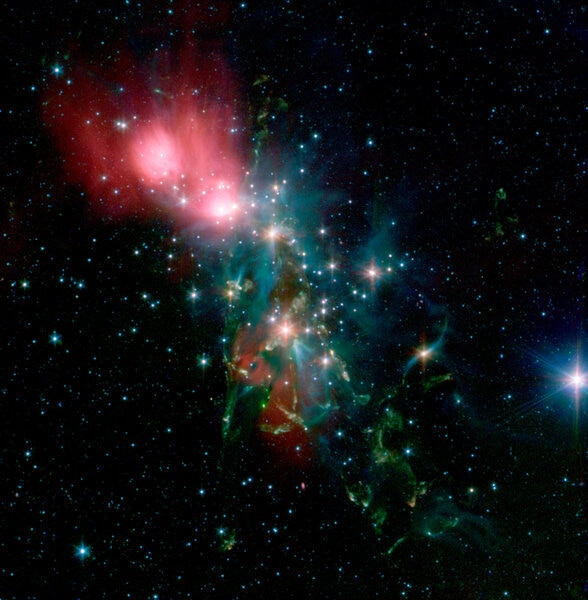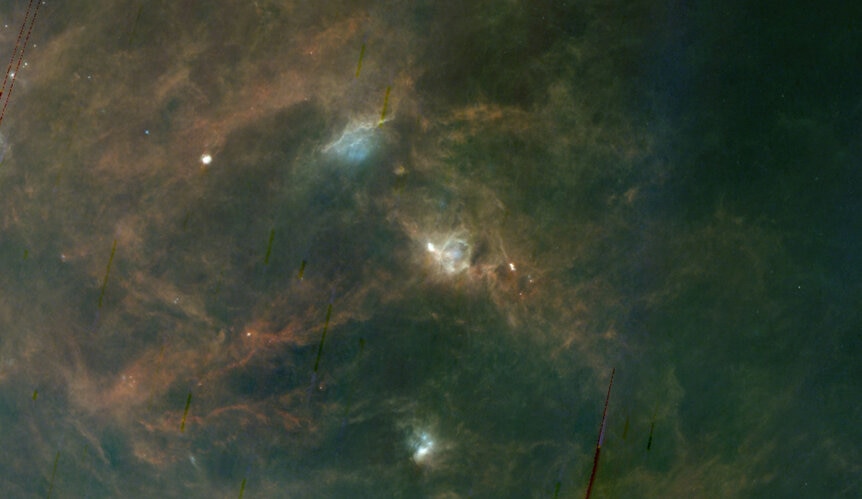Create a free profile to get unlimited access to exclusive videos, sweepstakes, and more!
The sky on fire: The cold flames of the Perseus Molecular Cloud
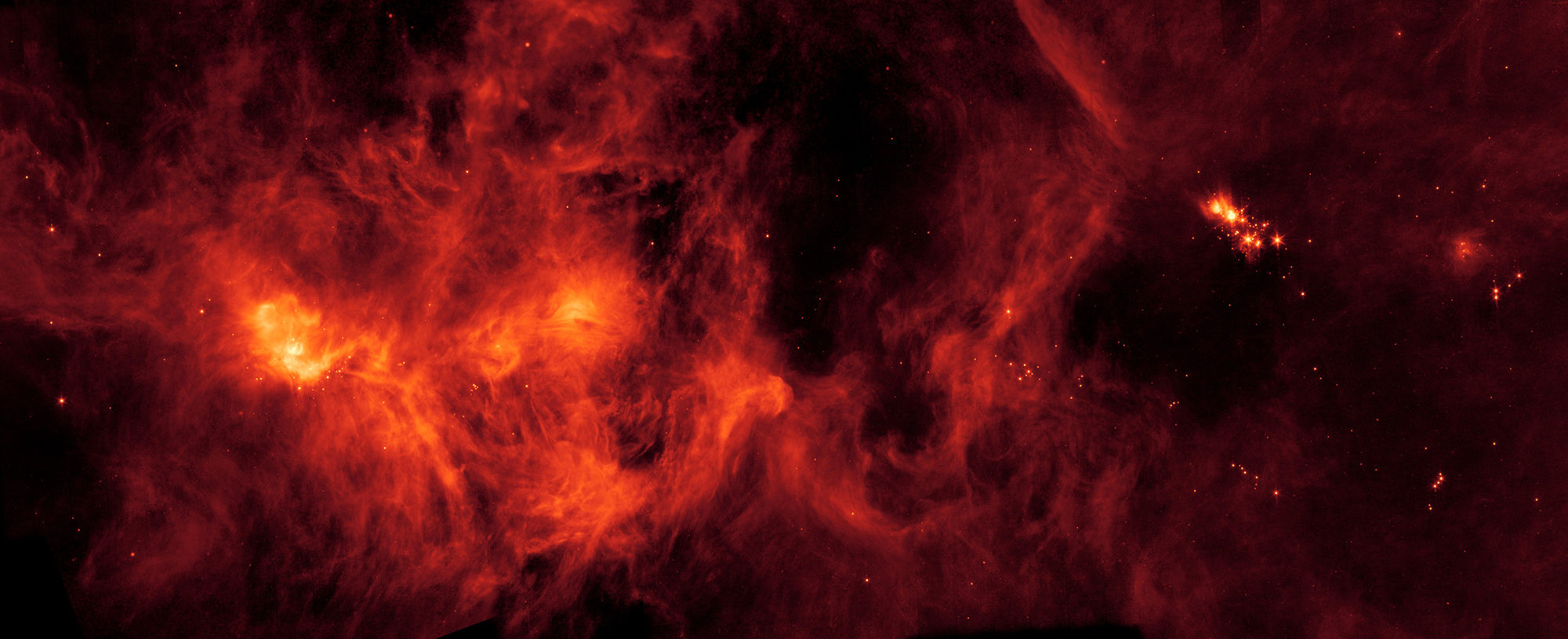
Some of the largest single structures in the galaxy are huge dark nebulae, clouds of gas and dust that are extremely cold in human terms and emit almost no visible light. These are called Giant Molecular Clouds — they're cold enough that atoms can stick together to form more complex molecules — and are so utterly dark that we tend to see them in silhouette against the star-filled Milky Way.
... to our eyes, that is. We see only a narrow band of the entire electromagnetic spectrum. But others parts exist, like radio waves, X-rays, ultraviolet. We've built telescopes and equipped them with detectors to see these other kinds of light; many are in space because we need them to be above our atmosphere, which absorbs those kinds of light, making it opaque to them.
The Spitzer Space Telescope is one of them. Operated for 16 years before budgetary restraints shut it down, it still orbits the Sun on an "Earth-trailing" path that lets it slowly drift away from our home planet. Designed to see in the infrared, it observed the Universe from nearby asteroids to galaxies at the edge of the observable Universe billion so of light years away.
It also saw many Giant Molecular Clouds. While these are black to our eyes, they're warm enough (though still very chilly) that they glow in the infrared. And when Spitzer saw them, it really saw them:
That piece of magnificence is the Perseus Molecular Cloud, located very roughly 1000 light years away in the constellation of (can you guess?) Perseus. This image shows a huge patch of sky over 5° across — ten full Moons could fit across it.
This shot was taken early on in the mission; after 2009 the liquid helium cryogenic coolant ran out, and Spitzer lost a couple of its longest wavelength channels. But when this image was taken it could still see at a wavelength of 24 microns, over 30 times longer than the reddest light the human eye can see. At this wavelength, the view is dominated by dust at about -150° C (-240° F); dust is composed of tiny grains of rocky material or long molecules of carbon, created when stars die, blowing the material into space. The color in the image isn't real; it's just been converted to color we can see, so the orange looks like flame, but it's a cold flame.
There are several features in the cloud visible in this image. The bright knot on the left is IC 348, a very young cluster of stars. Molecular clouds can be rife with star formation; regions where the local density is high can collapse under their own gravity to form stars. The most famous example of this is the Orion Nebula, which is on the near side of the enormous Orion Molecular Complex. IC 348 is probably only a couple of million years old, and most of the stars are low mass like the Sun. If it had high-mass stars in it they would light it up like a Christmas tree, and this would be as spectacular as the Orion Nebula. Instead, it's mostly hidden from our view, enshrouded in thick dust.
Just to the right of it is a larger circular ring called Barnard 3. I've written about that before; in the center of it is a massive star called HD 278942, which is blasting out a wind of subatomic particles that snowplow up material, creating that ring.
On the right hand side of the image is another clutch of stars called NGC 1333. I've written extensively about this cluster as well (here and here). It's loaded with young, hot stars which are blasting out radiation and gas, carving up and sculpting the gas and dust in the molecular cloud around them in bizarre and beautiful shapes. You can see a handful of other small clusters below NGC 1333 in the bigger image, too.
Molecular clouds like this can claim the lion's share of star formation in our galaxy, some birthing thousands upon thousands of stars. Mind you, this Spitzer image is only a piece of a much bigger complex of gas and dust; you're seeing maybe a 100 light year strip of a sprawling 500 light-year long cloud. These clouds are enormous and they're everywhere in the galaxy.
I often wonder if the Sun was born in a cloud like this. There are also much smaller clouds but they form stars at much lower rates, so it seems pretty likely something like Perseus is where we got our start. It happened 4.6 billion years ago, and that nebula is likely long gone by now, or possibly on the other side of the galaxy anyway, so we may never know.
But studying objects like these is literally trying to understand where we come from. It's one of the things that makes me love astronomy so much; we want to know our origins, and how we came to be.
And on top of that the objects we study are just so flipping gorgeous. That is something I will never tire of.

